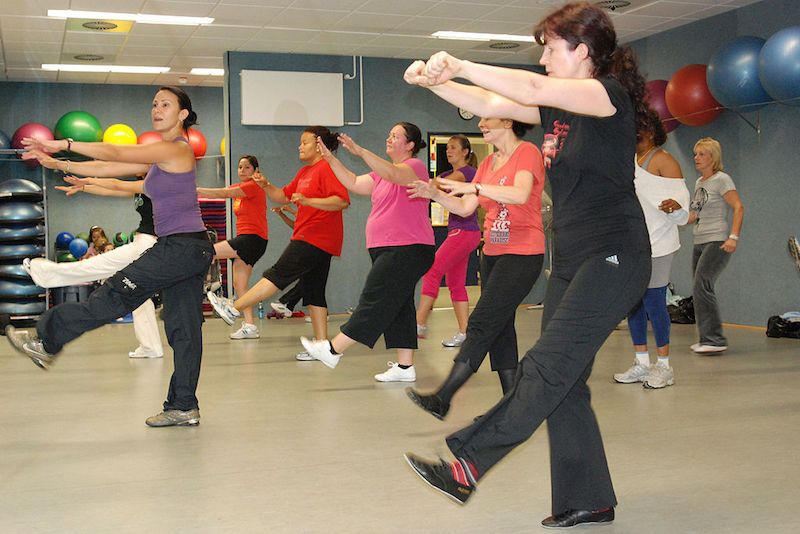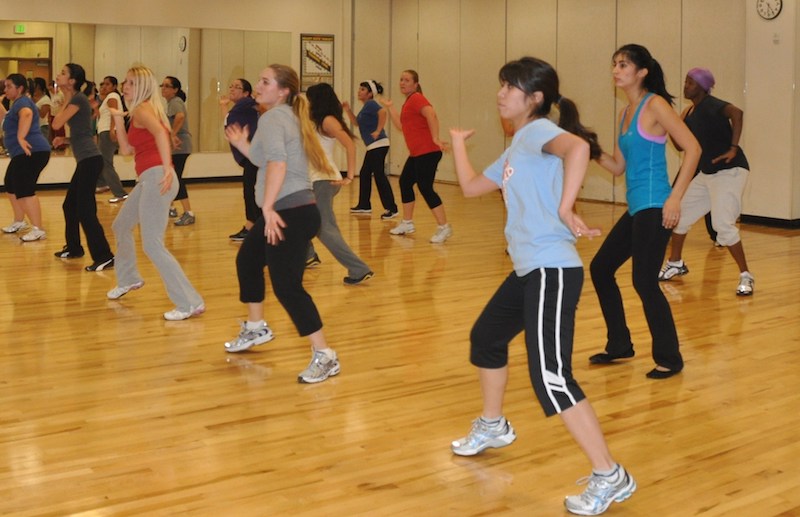Do you like to dance? Then you’ll love Zumba.
It’s a dance-based fitness program with choreography inspired by Latin styles of dance like salsa and samba. It has lots of high-energy moves that work your whole body, like the merengue march and salsa two-step.
Zumba classes also feature upbeat playlists of Latin music that make working out more fun and motivate participants to push themselves harder.
Some people have such a good time doing Zumba that they say it doesn’t feel like a workout! But does it actually work, and is it the right workout for you?
What are the pros and cons of Zumba?

Don’t be fooled by Zumba’s “fun and easy” marketing, though — it’s a highly effective cardio workout that burns calories, strengthens your core, and improves your cardiovascular fitness. And yes, it is a pretty enjoyable way to get a good sweat!
But Zumba alone won’t get you a toned or ripped physique without also including strength training. And the difficult to learn, high-impact steps can sometimes be tricky for beginners or people with an injury history.
To help you learn more about this popular dance-based fitness program and decide if it’s right for you, we’ve outlined the main pros and cons of Zumba below.
Pros of Zumba (Benefits)
Zumba is a great cardio workout that will burn calories and help you shed excess pounds.
Here’s a full list of its biggest benefits.
It’s a great form of cardio
Experts recommend that you get at least 150 minutes per week of moderate intensity cardio, and Zumba fits the bill.
The high-energy dance routines will really get your heart pumping and make you break a sweat.
Studies have also shown that Zumba classes can build your endurance, decrease your blood pressure, and improve your physical fitness overall.
One study found that after taking just 17 Zumba classes, participants showed significant reductions in both triglyceride levels and blood pressure.
Another study found that people’s endurance increased after doing Zumba for a short period of 12 weeks.
If studies show these kinds of results after just a few classes, imagine the improvements you’ll see if you stick with Zumba and make it a regular part of your fitness routine.
Works for all skill levels
In addition to the original Zumba classes, there are a variety of spinoff classes to suit people of all fitness levels.
Here are just a few of the classes you may be able to take at your local gym.
- Zumba Step uses an aerobic stepper to intensify your workout and strengthen your thighs and glutes.
- Zumba Toning incorporates light weights into a regular Zumba routine to tone and strengthen your arms.
- Zumba Gold is a slower paced class that’s great for beginners and older adults who are trying to stay active. It features modified versions of the original Zumba moves that are designed to be less intense.
- Aqua Zumba is a low-impact, dance-based workout that takes place in the pool. It may be a good option for people who are recovering from injuries or have joint problems.
So whether you’re new to fitness or looking for a challenge, Zumba has a class that will work for you.
Burns lots of calories

Because Zumba combines high energy and low energy dance moves into one workout, it burns a lot of calories — 9.5 per minute to be exact.
A recent study showed that Zumba classes have the same kind of effect on your heart rate as interval training.
Interval workouts tend to burn more calories in a shorter period of time than other forms of cardio like walking and jogging.
So if you want to shed excess pounds before summer arrives, Zumba is a good choice — just remember, you won’t lose any fat without first getting your diet in check.
Strengthens your core
If you’ve ever taken a Latin dance class, you know how much the hip-shaking dance moves work your abdominal muscles.
Zumba is inspired by Latin styles of dance such as salsa, samba, and merengue, so many of the routines involve that same side-to-side motion that strengthens your core.
Will it give you eye-popping abs? Probably not.
But for the overall health and stability of your core, Zumba is a good choice.
(Learn more about what results from Zumba you might get in one month.)
Cons of Zumba
Zumba has lots of benefits, from building your endurance to strengthening your core.
But like any workout, it has a few drawbacks, and it might not be the right workout for you.
Lack of strength training
Zumba can help you build endurance and burn calories. But it may not be the best way to build muscle.
Most Zumba classes don’t incorporate weights, and even the classes that do only use light ones in the three to five pound range.
So if you really want to tone your arms and get them summer ready, you should weight train on the days that you’re not doing Zumba.
(Read: Should you lift weights instead of Zumba?)
High-impact
Zumba involves lots of jumping, bouncing, and other high-impact movements that are hard on the joints. The twisting and turning motions involved in some moves can also put pressure on your knees.
Still, people with joint problems shouldn’t rule out Zumba entirely. Several studies have shown that dance-based cardio workouts can improve mobility and reduce joint pain in people with arthritis.
However, you may want to stick with one of the lower impact classes like Aqua Zumba or Zumba Gold. They provide many of the same benefits as the original class and don’t place as much stress on your joints.
And as always, talk to your doctor before starting a new fitness regimen.
(Read: Is a lower-impact workout like the elliptical a better choice for you?)
Risk of injury
Because Zumba is a fast-paced, high-impact workout, you may sustain injuries while doing it.
Doctors say that the most common Zumba injuries include sprained ankles, hamstring injuries, and muscle spasms. They often occur when people wear the wrong shoes or don’t stretch before class.
Many people wear running shoes to Zumba, which increases their risk of hip and knee injuries.
Running shoes have thick treads on the bottom that grip the floor and make it harder to pivot. They aren’t designed for the side-to-side movement that Zumba workouts require, so wearing them puts extra stress on your joints.
To make bouncing around during your class easier, wear a flexible pair of shoes like cross-training shoes or dance sneakers instead.
Another common cause of injury is a lack of stretching. Some Zumba instructors dive right into class without giving participants adequate time to warm up.
If your instructor doesn’t devote much time to stretching and warmups, you should do some stretches on your own before class. Focus on your calf muscles and hamstrings, as they’re the muscles that are most likely to get strained during Zumba.
The choreography can be hard to learn
If you’ve never taken a dance class and aren’t used to learning choreography, Zumba moves may be hard for you to pick up.
They’re based on Latin dance styles like salsa and merengue, so they require a fair bit of rhythm and coordination to execute.
If you have two left feet, you could have trouble keeping up with the fast-paced salsa moves and step sequences, especially during your first few classes.
Wrapping Up
Zumba is a fast-paced, high-energy fitness program that’s great for burning calories and building endurance.
But because it’s so high-impact, it may not be the best choice for older adults who have joint problems or people who are recovering from injuries.
The choreography can also be hard for beginners to learn, especially if they don’t have any experience with dance or a sense of rhythm.
And if you want to build muscle, especially in your arms, you’ll have to combine Zumba with forms of strength training like lifting weights.
Despite its drawbacks, Zumba is still a great option for people who are tired of typical workouts and want to find a fun way to stay active, improve their physical fitness, and lose weight.
If you’re thinking Zumba isn’t for you, check out my Pros & Cons guides to running, yoga, and pilates.
Hope this helps!